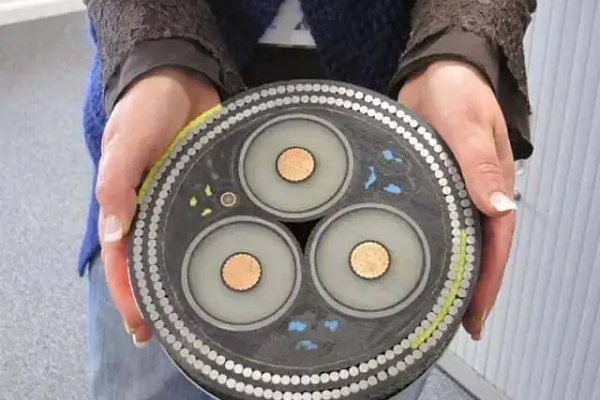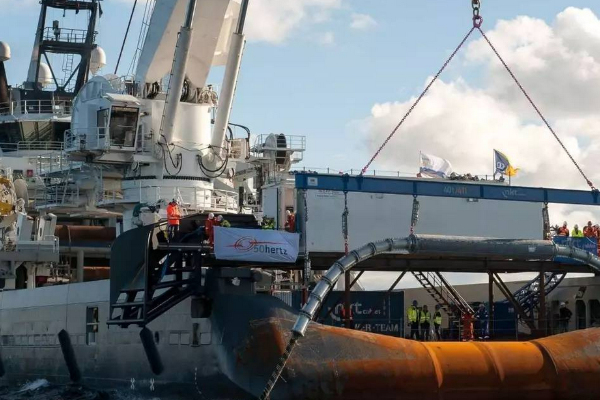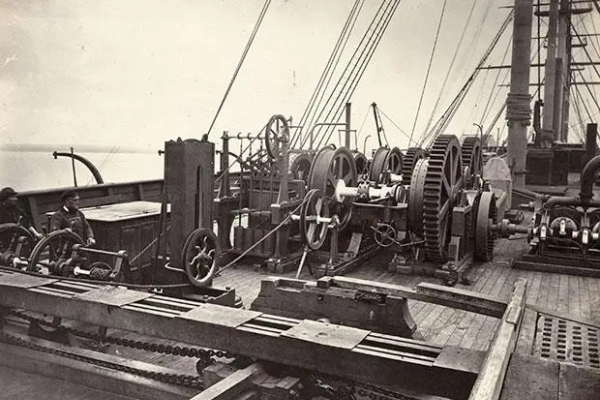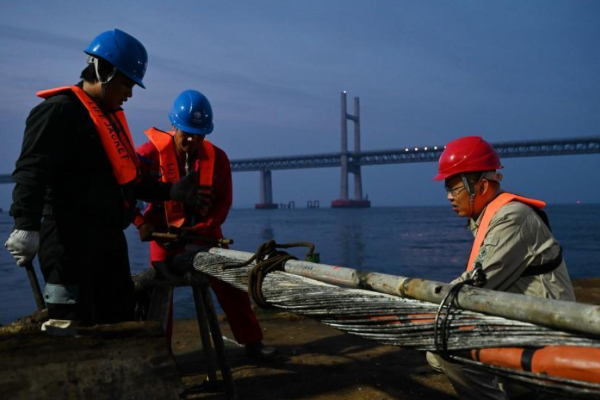As part of the construction of energy projects, There is a very difficult type of project to carry out. This is the installation of fiber optic submarine cable. This type of project is generally applied to the transmission of energy or data to very long distances. For example, transmission between countries or transoceanic transmission. Faced with the unknown situation under the sea, Any cable installation project is difficult.
What is a Cable Sous-marin ?
A submarine cable is a type of cable placed on the seabed. It is used for energy transmission and the transfer of information over long distances and is one of the main means of connecting the world. Information exchanges between regions being more and more frequent, The demand for long distance transmission by sea is increasingly strong. More and more underwater lines are installed at the bottom of the sea.
The structure of submarine cables is complex. It is mainly used for cable protection. Due to various uncertainties under the sea, The cable can be threatened at any time.

The exterior of the submarine cable is covered with asphalt or vinyl to avoid erosion by sea water and mechanical damage. Optical fibers and drivers inside the cable are inserted into a steel tube to avoid damage caused by water pressure.
The outer side is covered with high-strength steel wire armor and PVC material as a protective layer. It is covered with a layer of bitumen to prevent seawater erosion.
The internal test uses metallic armor to increase the support and prevent water pressure from damaging the cable. The driver is aluminum or copper. For submarine cables with optical fibers, The transmission support is replaced by optical fibers for data transmission. Empty spaces are also filled with petroleum jelly to reduce the fluctuations to which fiber is subject.
Submarine cables are widely used in various large-scale projects. These include wind energy at sea, transoceanic transmission, you forage one more, etc.
System of Cable Sous-marin
Throughout the underwater cable system, The cable is only used for transmission. There are other surface elements and submarine elements that work together to form a complex system.
Equipment Surface
Surface equipment includes the terminal equipment of the optical cable, Remote power supply, Line detection equipment, Network management equipment, etc.
Terminal equipment is responsible for sending and receiving signals at both ends of the cable. The detection installation is used to monitor alerts and locate defects. After all, It is not realistic to count on the workforce to investigate thousands of kilometers.
Equipment Sous-marin
Submarine equipment includes optical fiber cables, Repeators, etc. Optical fiber cables, We all know what they are doing. But do you know the repeaters ? This is the equivalent of a signal amplifier. Although the loss of the fiber optic cable is very low, It is considerably amplified when it is subject to a very long transmission distance. Repeators are used to amplify signals and compensate for the attenuation of signals, thus facilitating the transmission of optical fiber cables over long distances.
Comment Pdare a Cable Sous-marin ?
Faced with the complexity of the environment and the dangers of the sea, The distance to be covered for the installation of cables is counted in thousands of kilometers. How should underwater cables be installed ? It is not a simple depression in the seabed. The entire installation process is divided into two parts : the area of shallow waters and the deep water area.
Pose Eto Peu PRofondes
The installation in shallow waters must be pulled to the shore by a tractor equipped with a float on the cable ship. The floats are removed once the connection to the land is successful. The fiber optic cable flows to the bottom of the sea under the effect of gravity.

Pose Eto PRofondes
It is in the pose in deep waters that the difficulty resides. We must face the unknown conditions of the seabed and a variety of underwater activities. For example, underwater earthquakes, underwater volcanic eruptions, etc. The difficulty in laying cables increases geometrically.
First of all, You should use underwater probes to monitor the underwater environment and avoid rocks or trenches. Select the appropriate line.
Once the line is studied. It is then necessary to install an optical fiber submarine cable. An underwater excavator is immersed with the optical fiber cable. Pushed by the installation vessel, The underwater excavator creates a trench in the seabed. The optical fiber cable is placed in the trench through a cable fiber cable hole with optical fibers. Ensuite, The optical fiber cable is covered with sediments.
The difficulty of installing optical fiber submarine cables may not be apparent in words, but in reality, The process is very complex. The factors to be taken into account are the sail of navigation, the installation speed and the input angle of the cable in the water.
The Premier Cable Sou-Marin at Mwhere
The installation of submarine cable is a very difficult project. But the first underwater cable in the world was laid in 1850. It surprises you ? Oui, the development of underwater cables began there is 170 ans.

The first submarine cable was placed through the Channel, connecting the United Kingdom and France. The cable used copper wires and Rubber insulation To allow the communication of information through the Channel. It made it possible to gain experience and technical support for subsequent installation of submarine cables.
With technology development, The first cable crossing the Atlantic Ocean was laid in 1866.
Comment RTo prune the Cable Sous-marin ?
Submarine cables are well protected during the installation and manufacturing process, But damage to the cable line are inevitable under the sea. For example, an underwater earthquake or the anchor of another ship can damage the cable.
The first step is to locate damage on the thousands of kilometers of cables. A ship is then sent to repair them. Mechanical claws are used to pull the damaged cable to the surface, where engineers repair it and put it in the sea.

Underwater cables can be repaired. But we must always focus on cable protection. After all, The cable can be repaired, But the information data transmitted by the optical fiber cable is the most important.
